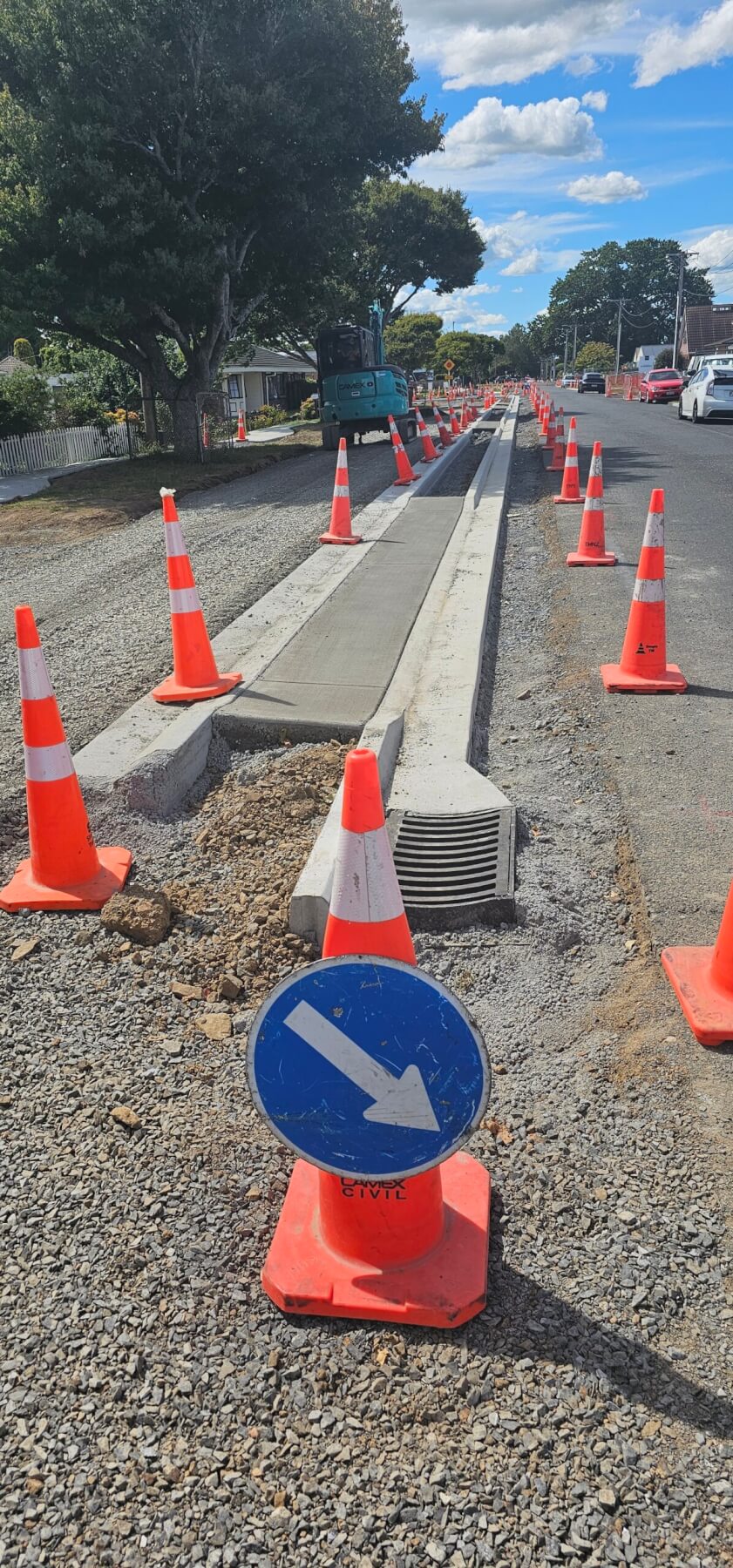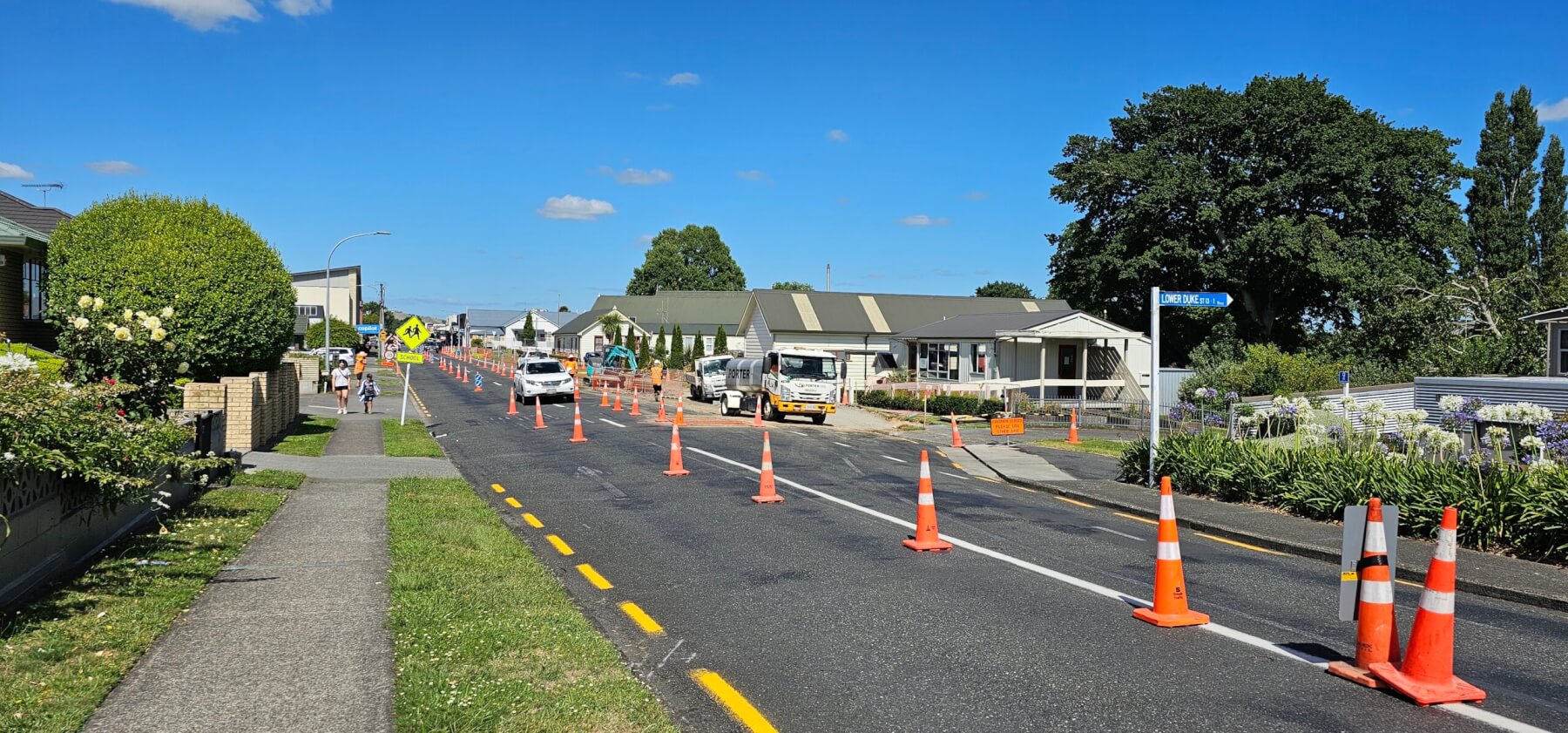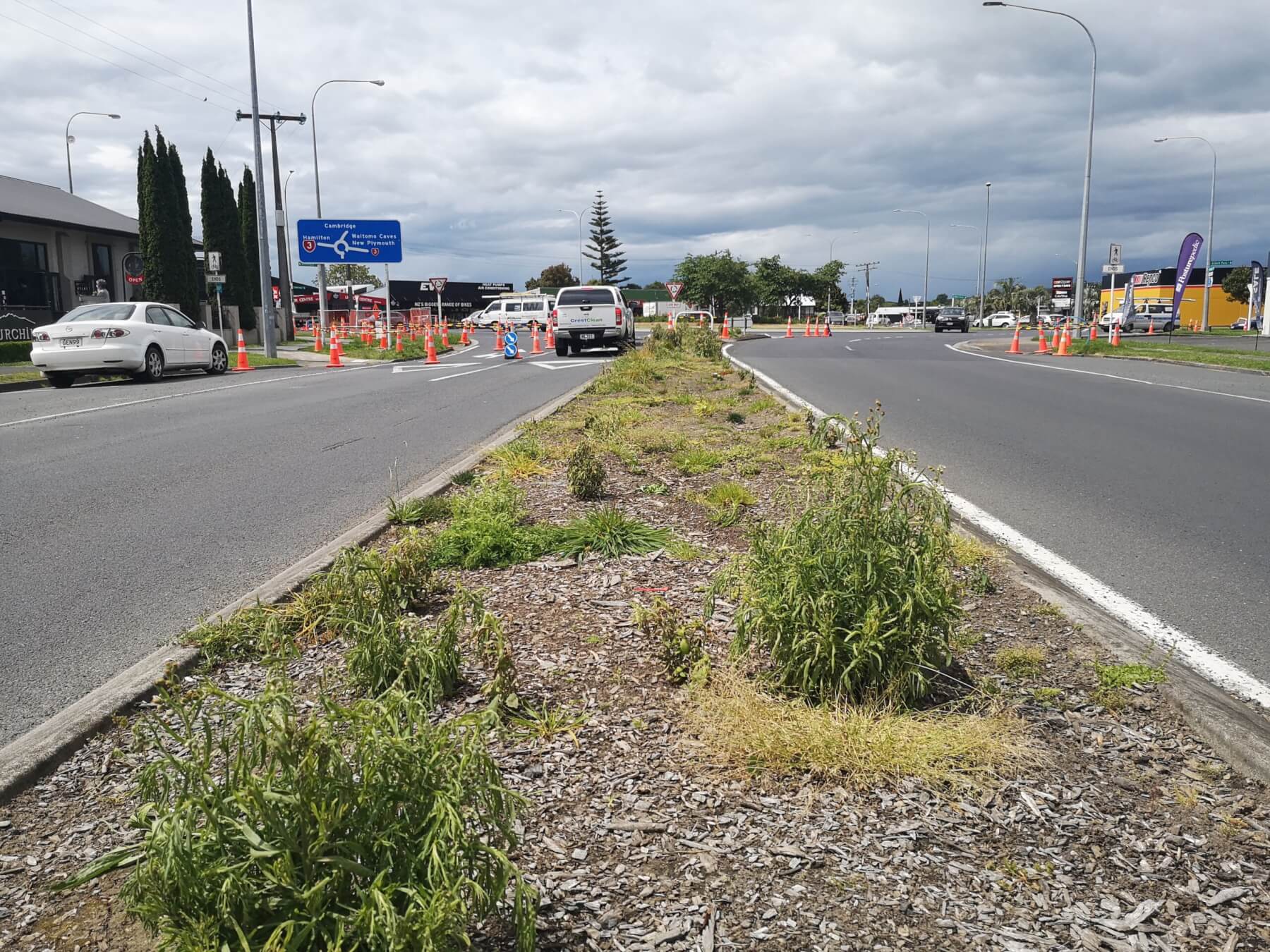Two trials where Waipā District Council uses fewer road cones and signs at worksites have resulted in reduced worksite congestion and less disruption to road users and residents.

An examples of historic road cone use in Cambridge.
Fire main replacement in Te Awamutu – at Palmer, Fraser, Bradey, Jackson, Redoubt and Vaile streets – and the Grey St pathway in Cambridge are the guinea pig projects, Human Resources Operations manager Clark Collins told the Finance and Corporate committee this week.
“This innovative approach ensures that traffic management decisions are based on an assessment of actual risks encountered at each worksite, rather than following a purely compliance focused method as outlined in the Code of Practice for Temporary Traffic Management,” he said.
The two trials are continuing but an earlier trial, implemented during watermain replacement work in Cambridge and Te Awamutu, used another risk-based approach.
Workers reduce controls in localised areas in contrast to the code’s approach which typically requires the full traffic management setup until the whole job is completed.
The code approach is well established in New Zealand and it will take time for the “risk-based method” to gain broader acceptance, he said. Waipā District Council would continue to collaborate with contractors for other projects the approach could be used, Collins told the committee.

An example of historic road cone use in Cambridge.

Example of historic road cone use in Te Awamutu.








